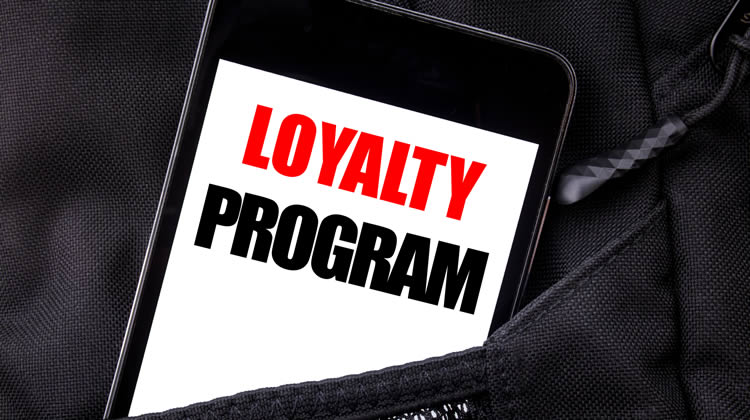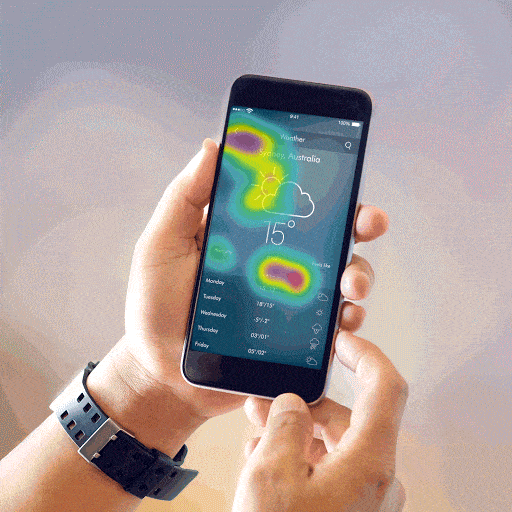
The holiday season is fast approaching. Yes, I might be mentioning it even earlier than Macy’s or your chain pharmacy, but before you know it, those Halloween decorations will quickly be replaced by Christmas lights and Black Friday advertising. As people prepare for the inevitable holiday shopping sprees, they start looking for best deals and the most significant discounts, giving businesses ample opportunities to reward app users for their loyalty.
Most businesses are aware of the potential of loyalty programs, as rewarding customers for coming back is a practice that has been around since the earliest days of trade. However, what is important to remember here is that we are not in the ‘early days of trade’ – we are way ahead. Digital transformation (the use of new digital channels, including social media, chatbots, Big Data analytics, cloud services) and the penetration of mobile apps in every aspect of a consumers’ life has changed their habits and their expectations, leaving businesses unsure how to maximise loyalty.
Read on to see what you should do, and what you should not do, as you push for perfection in loyalty programs on the mobile platform.
The Don’ts
Forgetting Onboarding
Your customers need to stay hooked to the loyalty program. Otherwise, it is not going to work. It needs to be simple and effective. Consumers need to understand the benefits they are getting from the program, and you need to make sure those benefits are worth their precious time and “effort”. All those things need to be communicated clearly. Finally, you need to gather data on your newly acquired loyalty program members and analyse your onboarding strategy. Without these (most basic) elements, you can expect your engagement curve to start plummeting very fast. Onboarding is a science in its own right, and it is very easy to get it wrong. Things like rushing into app permissions, or being prone to hyperbole, are common mistakes product developers make, destroying their onboarding process without even knowing it.
Ignoring Centennials
Loyalty is not something you get overnight. It is a long-term investment that needs a lot of time and effort to build. Despite this reality, retail brands often ignore Centennials (Generation Z), and cater mostly to Millennials, because they see the latter as the ideal demographic – they are a little bit older, use new technology to its maximum potential, and they have substantial purchasing power. Centennials might not have that purchasing power (yet), but it is just a matter of time before they get there. So if loyalty is something you build over time, now is the best time to start thinking of the new generations.
Centennials are an essential group as they are the first generation to not know life without internet. Some of them do not remember what it is like to have a corded phone. This is the generation that will look to its smartphone for virtually everything. If you want a robust loyalty program on mobile, not just today but in the future, do not ignore them. You can use these seven strategies to engage with Generation Z successfully.
Disregarding Analytics
Here is a little mantra for you by the wise Peter Drucker, “what gets measured, gets managed”. Everything should be measured, especially loyalty programs, but measured the right way. As users have advanced, so too have today’s analytics platforms. Avoid sitting on vanity metrics and focus on how your users are actually engaging with your program.

A robust user behaviour analytics tool will not only help you determine if a certain program “works” or not but can also give you great ideas for future iterations. By tracking user behaviour with tools like touch heatmaps and behavioural cohorting, you can quickly diagnose usability issues in your loyalty program and address them adequately. It can also deepen your own analysis of CX and enable you to deliver a better, meaningful customer experience– one that can even turn your users into brand ambassadors.
Remember – the better the measurement, and the better you distil and react on the right data, the better the loyalty program.
The Dos
Create Rewards for More Than Just Spending
Do not limit your loyalty programs to purchases. Why? If you force people to buy something to participate in the loyalty program, it might come off as if you do not really care about the user’s needs, but instead are just trying to motivate them to spend more. Loyalty programs revolve around showing your customers you care, which is why it is critical to have other means of participation, besides purchases. That can be anything from writing reviews online, to participating in different surveys, to pretty much anything else you can come up with. People love being part of successful projects. They like their voices heard and their opinions valued. By offering consumers a chance to participate in your brand, without them needing to spend a dime, you are telling them you appreciate them as a person, and then as a customer, as well. What better way to build loyalty, right?
Personalization, Personalization, Personalization
Imagine rewarding a diabetes patient with a coupon for Dunkin’ Donuts. Or, giving a New York Knicks fan tickets to a Boston Celtics game. Imagine, in our case – giving a mobile-first user a discount for buying on a desktop. Not only will they quickly decline the offer, but this might completely ruin the relationship you have with your customers. Never let your customers ask themselves ‘why am I getting this?’ – which is why you absolutely must make sure all your offers are strategically personalised. Carpet offers are a thing of the past. Thankfully, digital platforms can help you gather lots of valuable information about your customers, allowing you to personalise and tailor different offers to specific groups of people. Use the tools at your disposal to craft personalised offers and analyse their efficiency to maximise their potential. In-app personalisation is an art in its own right, something we have written about in the past.
Implement a Relatively Short Journey to Benefits
There was this café we encountered during a recent conference, which had a loyalty program within its mobile app. Basically, by ordering a cup of coffee, any coffee, through the app, you get a point. By collecting 100 points, you get a small gift, which consists of a cup with a special message. The thing is that customers were limited to one point a day. Completely disregarding the fact that you would get a present worth less than one per cent of the amount you would spend, it would take you at least three and a half months to get it. That journey is way too long and utterly disproportionate to how much time, effort and money is needed from the customer.
By having too long of a journey, especially if the reward is not that worth it, people will be quick to abandon your loyalty program. Whether or not it will hurt the brand is open for discussion, but it certainly will not help with your goal to keep your customers coming back for more, satisfied. You need to pay attention to this journey and measure how quickly customers can earn equity, to gain benefits from loyalty programs. Obviously, it should not be too fast, but if it takes too long, it is not going to work.
Be Unique
Nowadays, everyone knows two things:
- The majority of a company’s sales come from a minority of their customers;
- Those customers need to be retained, which can be done (among other things) through loyalty programs.
However, what many brands neglect is the fact that technology is changing both commerce and consumer habits. These two things have a profound effect on loyalty programs, and if brands are to succeed they need to be unique in their approach, offer personalised, relevant and exclusive content, and make sure it is easy to consume and participate.
At the same time, they must be careful that their onboarding strategies for loyalty programs are rock solid, that they are catering to all the right demographic groups. Finally, they must not forget to use the data obtained to analyse and tweak their loyalty programs. Just because it worked yesterday, it does not mean it will work tomorrow!
Want to learn more?
Are you interested in the managerial and strategic aspects of UX? The online course on UX Management and Strategy can teach you the necessary skills on the subject and earn you an industry-recognized course certificate to advance your career. If, on the other hand, you want to brush up on the basics of UX and Usability, the online course on User Experience might be a better fit for you (or another design topic). Good luck on your learning journey!
(Lead image: Depositphotos)
